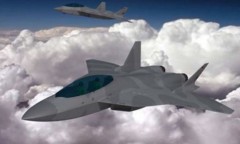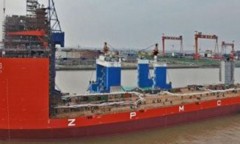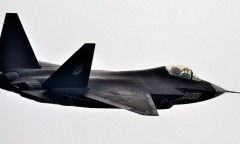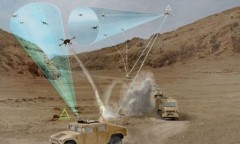By Arthur Dominic J. Villasanta , | March 27, 2017

An F/A-18F Super Hornet conducts touch-and-go flight operations off the deck of USS George Washington while testing MAGIC CARPET.
The arduous and nerve wracking task of landing fighter jets on a heaving U.S. Navy aircraft carrier out to sea will be made less stressful by the introduction of a new automated landing system.
Pilots of McDonnell Douglas F/A-18E/F Super Hornets and Boeing EA-18G Growler electronic warfare aircraft assigned to the USS George H.W. Bush (CVN-77) and the USS George Washington (CVN-73) have tested a new carrier landing assistance technology called MAGIC CARPET, which simplifies the process of landing a fighter on an aircraft carrier.
Like Us on Facebook
This acronym stands for Maritime Augmented Guidance with Integrated Controls for Carrier Approach and Recovery Precision Enabling Technologies.
MAGIC CARPET improves pilot safety and efficiency by removing much of the stress of landing from the pilot and transferring it to a computer running special software. When MAGIC CARPET is switched on, the pilot no longer directly controls an aircraft's flaps, throttle and other critical features. That job is transferred to MAGIC CARPET.
Instead of focusing all his skill and nervous energy on landing, a pilot just has to select a landing path and the computer makes all the fine adjustments that allow the aircraft to stay on that path. The pilot remains a key part of the system, however.
With MAGIC CARPET, a pilot on a landing approach won't have to worry about adjusting roll, yaw and pitch, adding and reducing power, and predicting how the plane's course will intersect with the moving ship. And because the navy's Boeing F/A-18E/F Super Hornets and EA-18G Growlers have digital flight controls, MAGIC CARPET remaps those controls through a software-only change.
"All results showed benefits in touchdown dispersion reduction of more than 50 percent when compared to current landing control techniques," said James Denham, a NAVAIR senior aeromechanics engineer. Touchdown dispersions refer to the differences between the actual and ideal landing points.
The navy completed testing of its MAGIC CARPET technology in mid-2016. MAGIC CARPET is expected to be released to all navy aircraft carriers in 2019.
-
Use of Coronavirus Pandemic Drones Raises Privacy Concerns: Drones Spread Fear, Local Officials Say

-
Coronavirus Hampers The Delivery Of Lockheed Martin F-35 Stealth Fighters For 2020

-
Instagram Speeds Up Plans to Add Account Memorialization Feature Due to COVID-19 Deaths

-
NASA: Perseverance Plans to Bring 'Mars Rock' to Earth in 2031

-
600 Dead And 3,000 In The Hospital as Iranians Believed Drinking High-Concentrations of Alcohol Can Cure The Coronavirus

-
600 Dead And 3,000 In The Hospital as Iranians Believed Drinking High-Concentrations of Alcohol Can Cure The Coronavirus

-
COVID-19: Doctors, Nurses Use Virtual Reality to Learn New Skills in Treating Coronavirus Patients











